Chef and Sustainable Seafood Expert Barton Seaver traveled to three export markets in November 2022 to build awareness about American lobster products.
To raise awareness for American lobster products in Singapore, United Arab Emirates, and France, Food Export–Northeast sent Barton Seaver, chef, author, and sustainable seafood expert, along with Emily Lane, a member of the Food Export–Northeast Seafood Program team, to those markets in November 2022 to put on a series of unique culinary master classes for HRI chefs and key seafood importers. We recently sat down with Chef Seaver to get his perceptions and key takeaways on how American lobster products were received by these high-end international tastemakers.
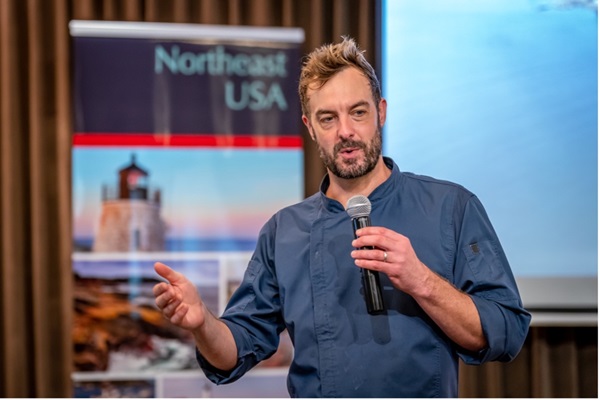
What was your biggest takeaway?
American lobster products are ingredients that garner attention and get people interested. Not every product format is going to speak to every chef, so it’s important that they see the full product range to determine how they might use it. For example, a cooked meat will work better in a buffet-style setting, while a raw tail will work better in a Michelin fine dining tasting menu.
These culinary events are about changing mindset, educating, and creating loyal users of American lobster products. Chefs tend to think of lobster only as the whole animal. For it to be cost effective on their menus, it needs to be available in different dishes multiple times, as a bisque, as an appetizer and as an entrée. To be able to pick and choose among the parts for their unique versatility was eye-opening for these chefs. These events helped to show the diversity of the product forms and the available conveniences offered by those various product forms, specifically the frozen cooked product.
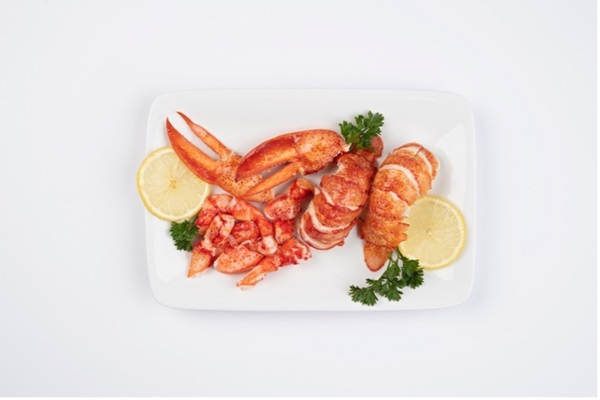
What Is the benefit of hosting these types of culinary events with chefs in international markets?
These events are extremely powerful for a variety of reasons. Many chefs have a bias against frozen seafood, and this type of direct engagement can help shift or change their way of thinking. You also inspire their creativity and provide them an opportunity to visualize how American lobster products can fit into their menu and restaurant style. You literally can see their creative wheels turning.
And most importantly, you’re cultivating champions for these products in these new markets in ways that really matter. These chefs can hear the story, learn about the origin and production, and taste the product. We’re meeting them where they are with their cuisine and showing them how this incredible product is relevant to all the areas of concern that they operate under — meaning sustainability, narrative quality, seasonality, and ingredient recognition. Nothing really replaces that direct experience, that direct engagement.
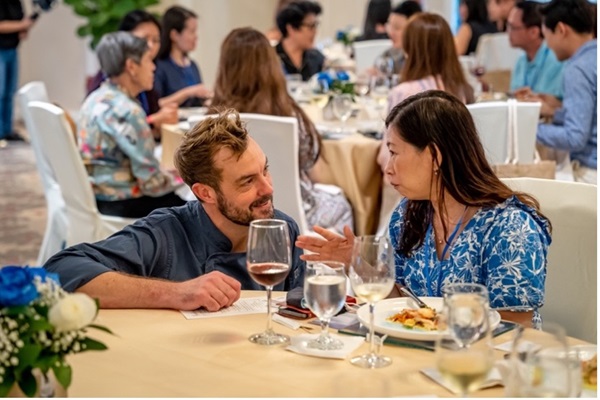
Do you have any market insights to share?
Each market and event was different, but it really helped to have such a marquee product like American lobster to demonstrate. From market to market, it really changed in terms of which products were most desirable. Singapore is focusing more on Asian cuisine, even though their restaurant marketplace is very international, and they do a lot more buffet style. In France, you’re talking to a group of chefs that are doing scratch cookery and are engaged at the product level by virtue of the cuisine. Dubai was the most diverse market when it came to cuisine. It’s an incredibly multicultural market that caters to luxury consumers from all over the globe.
What product format most intrigued chefs?
Of the raw processed products, the High Pressure Processed (HPP) tail was the star of the show. It was the product that was new for most of these chefs to experience. The raw frozen tail provides a wide-open avenue for chef creativity because of its incredible versatility. It can pair well with calamansi citrus and Thai chilies as much as it can pair with a deeply spiced mole sauce or a Middle Eastern fattoush-style salad. That versatility is impressive. But what really made a big impression on the chefs was that it was versatile in terms of cooking methods. You can grill it, poach it, steam it, sauté it, use a sous vide process, or serve it raw. They also saw the value in being able to purchase raw frozen tails out of the shell, which helps reduce labor hours in the kitchen and increase yield.
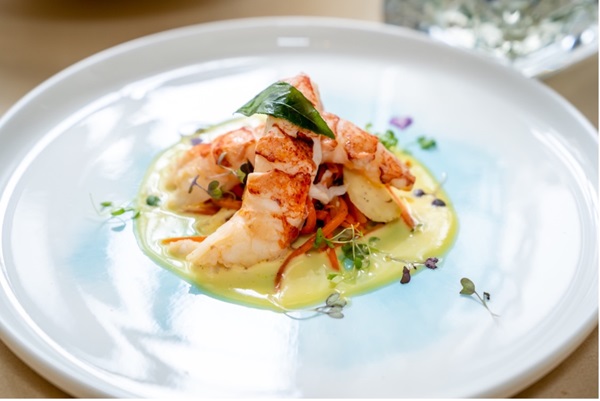
What were the “wow” recipe presentations and why?
In each location, the salad courses with the knuckle meat and claws were well received. That course utilized local market flavors and cooking methods. In Singapore, the salad featured tea smoked lobster knuckle. In Dubai, it was delicata squash with the knuckle meat, lime and mint, echoing Middle Eastern flavors. In Paris, the salad was more western Mediterranean with lightly smoked claws, shaved fennel, bell pepper and tahini dressing.
The salad course helped to show these chefs that you can use American lobster products beyond the typical entrée. Seafood in general has so much room to play in appetizers and in the intermediary courses. Showcasing American lobster products in a very fresh, vegetable forward, textured salad, where the lobster stood out, but also was seen as a component rather than the centerpiece got the chefs’ attention. They saw a lobster knuckle and claw product worth using to elevate or add a dynamic component to the salad or vegetable courses.
These smaller courses are also where so much of cuisine is going these days. That is why more premium hospitality establishments are offering tasting menus. Luxury is no longer just the giant steak in the middle of the plate. Today, luxury is about putting together thoughtful dishes that take health, seasonality, and portion size into account. It’s not just about flavor pairings, but rather a continuum of textures that keep the palette excited throughout the meal. It’s introducing a product that a diner might know in an unknown way. For example, lobster in a surprising application like a salad course reinvigorates the love and respect for that ingredient.
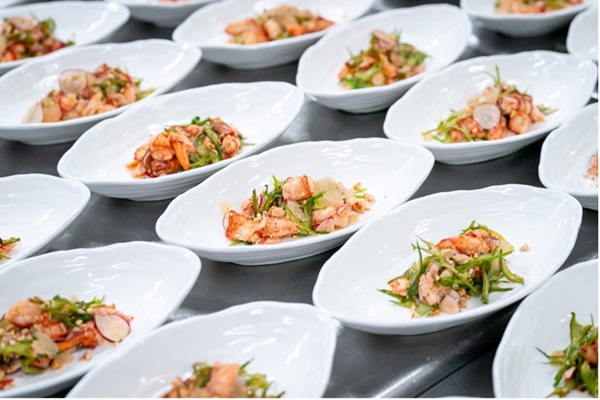
What were the top questions that chefs had about the products?
The most frequent question in all the markets was about consistency. In each location, the chefs asked in one way or another, “Wow, is it always like this?” And by this, I mean flavor, texture, performance, yield, and appearance. It was great to be able to answer yes to all of these.
Any new trends that could benefit the industry?
A new trend is seafood charcuterie. It’s one of the 10 new trends in cuisine and, minced lobster, which doesn’t have much visual appeal but is a very cost-effective product that delivers incredibly grand flavor, can play a role in it. Chefs can go beyond the traditional bisque and get creative and give minced lobster meat a more prevalent role on the menu as a center-of-the-plate ingredient. Chefs can charge more for charcuterie than they can for a soup.
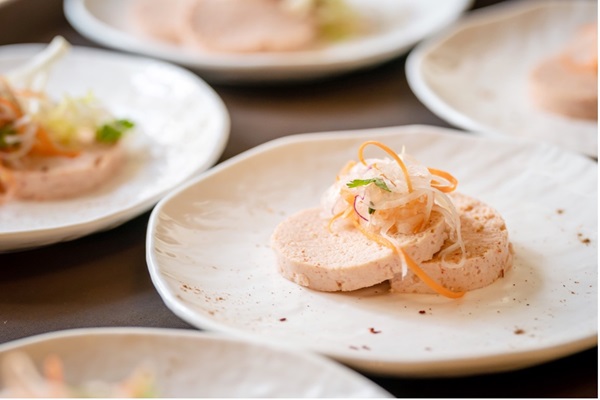
What were some of the challenges and what could the industry do to overcome them?
We’re dealing with a legacy and a bias left over from recent trade wars, and market penetration and momentum gained by other products. What we can do to help turn the table is to really own the provenance story and quality associated with that. It’s critically important to continue educating these markets and cultivating more champions to help drive demand and excitement for American lobster products. A great next step could be to invite these chefs and others to the Northeast to see the fishery in action where they can learn, taste and savor. The charisma of this place is unbeatable.
About Food Export USA–Northeast
With its extensive programs and educational offerings, Food Export USA–Northeast (Food Export–Northeast) is recognized as the preeminent expert and cost-effective resource for Northeast seafood and agricultural suppliers looking to sell their products overseas. Founded in 1973, Food Export–Northeast is a non-profit organization that works collaboratively with its 10 member states’ agricultural promotion agencies from Connecticut, Delaware, Maine, Massachusetts, New Hampshire, New Jersey, New York, Pennsylvania, Rhode Island and Vermont, to facilitate trade between suppliers and worldwide importers and to promote the export of food, agricultural and seafood products from those states. Since its founding, the organization has helped Northeast seafood suppliers gain access to a broad range of export markets, supported overseas in-market educational and promotional programs, and offers emerging suppliers access to funds to help grow their export business. The organization is funded through the Market Access Program (MAP), administered by the USDA’s Foreign Agricultural Service.
Learn more about us and what we do for the Northeast seafood industry here. Contact us.
Your Connection To Growth®
©2024 Food Export Association of the Midwest USA and Food Export USA–Northeast. All Rights Reserved.
Food Export–Midwest and Food Export–Northeast prohibits discrimination in all its programs and activities on the basis of race, color, national origin, religion, sex, gender identity (including gender expression), sexual orientation, disability, age, marital status, familial/parental status, income derived from a public assistance program, political beliefs, reprisal or retaliation for prior civil rights activity. (Not all bases apply to all programs.) Persons with disabilities who require reasonable accommodations or alternative means of communication for program information (e.g., Braille, large print, audiotape, American Sign Language, etc.) should contact us. Additionally, program information may be made available in languages other than English.
To file a program discrimination complaint, complete the USDA Program Discrimination Complaint Form, AD-3027, found online https://www.ascr.usda.gov/filing-program-discrimination-complaint-usda-customer.
Food Export–Midwest and Food Export–Northeast reserve the right to deny services to any firm or individual which, in the sole opinion of Food Export–Midwest and Food Export–Northeast, does not comply with FAS, MAP or Food Export–Midwest and Food Export–Northeast regulations or policies, or otherwise offer the best opportunity to achieve its mission of increasing food and agricultural exports. Submission of any false or misleading information may be grounds for rejection or subsequent revocation of any application or participation. Food Export–Midwest and Food Export–Northeast are equal opportunity employers and providers.
